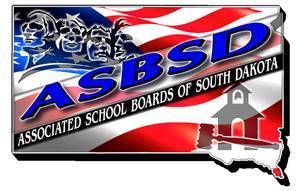ASBSD Executive Director Wade Pogany connected with board members and administrators from across the state for three days this week to recap the 2013 legislative session.
The three webinar dates featured Pogany answering questions from participants and sharing his observations on the legislature, K-12 funding and the bills that survived session.
Download the 2013 ASBSD legislative summary.
Here’s a rundown of what was discussed during the webinar:
Legislature Observations
In his second year lobbying for ASBSD, Pogany praised the high-level of cooperation between both houses and the bipartisan collaboration – specifically on Senate Bill 235, read on for more information – uncommon to previous years. He also noted the interaction between legislators and lobbyists.
“Education lobbyists were called in quite often by legislators for consultation,” Pogany said.
Pogany also said while the nation’s focus was on the potential effects of sequestration, South Dakota legislators didn’t share the same level of concern.
Funding
|
PSA PAST FIVE YEARS (APPROXIMATE) |
||
| YEAR | BASE PSA | CHANGE |
| 2009-10 | $4,805 | $163(3.5%)
|
| 2010-11 | $4,805 | $0(0%)
|
| 2011-12 | $4,390 | -$415(-8.6%)
|
| 2012-13 | $4,491 | +$101(+2.3%)
|
| 2013-14 | $4,626 | +$135(+3%)
|
“If at all possible, I’d love for us all to get back to $4,805,” Pogany said in reference to the state’s PSA level of fiscal year 2011 prior to the massive 8.6 percent cut schools took in FY12.
For more on what a return to $4,805 would take, check out yesterday’s blog post.
While acknowledging K-12 education remains underfunded, Pogany said the three percent increase and a growing interest among legislators to help schools signals a positive start to fixing funding.
“I really think we have some momentum around funding,” Pogany said. “The message is out there that clearly we’re still in crisis. I don’t think legislators came away with the notion that they solved the school’s funding problem.”
“We need to give some positive kudos to our legislators. We need to keep asking them to help us.”
Bills
House Bill 1137: Pogany said Gov. Dennis Daugaard’s line item veto on the bill providing $5.8 million in one-time dollars to schools is not expected to affect that money. Read more about the veto here.
The unrestricted, one-time funds will be distributed to schools for FY13 based on the enrollment figures from fall 2012 – based on the governor’s veto.
Senate Bill 235: “Never before have we had a placeholder for money to go into for education,” Pogany said of the economic development bill that establishes the Building South Dakota fund, which in turn supplies the Education Workforce fund.
The bipartisan bill uses 30 percent of the dollars raised for the Building South Dakota fund for the Education Workforce fund, which provides a 25 percent increase in state funding for ESL students, potential one-time dollars for districts and funds for CTE programs.
“Twenty-five percent of the per-student allocation comes out to a little over $1,100 per student in extra money for ESL students,” Pogany said.
Senate Bill 194: Pogany said the sunset date extension on the capital outlay flexibility provision could be the last provided by the legislature. Read more about the extension here.
“We have to do everything we can to wean ourselves off of the dependence on capital outlay,” he said.
Senate Bills 15 & 28: On SB 15, which increased the special education tax levies and set a ratio of 61-to-39 local-to-state percentage funding effort, Pogany said the bill “locks us in to a ratio we can work with going forward.”
On SB 28, which adjusted the property tax levies for a district’s general fund, Pogany said legislators took a long look at the agricultural levy and the potential low level it could reach.
“There might be some conversation around that,” Pogany said.
House Bills 1164 & 1185: The prior provides $500,000 in innovative grants for teachers, schools and ESAs and the latter appropriates $500,000 for a technology upgrade grant program.
Pogany said the requirements to receive grant dollars have not been posted, but ASBSD will post an update on the blog when available.
House Bill 1087: Pogany said the decision on a sentinel program is “up to the school boards” and based on the way the law is written a decision not to implement cannot be referred by area voters.
He also said ASBSD, SASD, Department of Education and the South Dakota Department of Homeland Security are studying school safety and the best practices to ensure and enhance it.
We encourage you to bookmark our blog for the latest news on K-12 education and ASBSD.
